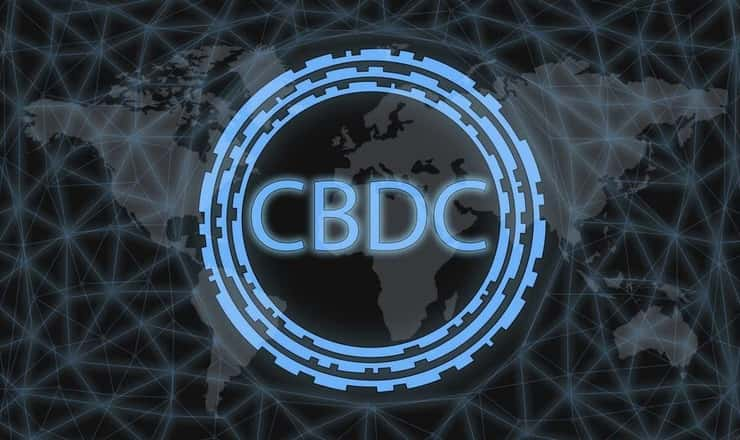In this post, you’ll learn and understand all about Central Bank Digital Currency (CBDC) which is similar to cryptocurrency, that you already read in our last post.
What Is a Central Bank Digital Currency (CBDC)?
Central bank digital currencies can be referred to as digital tokens. It is issued by the Central Bank, a financial organization. A CBDC additionally offers a country’s economic enterprise the financial regulations to provide balance, manage growth, and affect inflation. Many nations are growing CBDCs, and more than one has even implemented them. In the current times, several countries are learning approaches to transition into digital currencies.

Central bank digital currency can be described:
• As a digital form of traditional money.
• To be issued and ruled by a country’s vital financial bank – the central bank.
• To have Influenced a country’s monetary policies in terms of supply and value with the help of trade surpluses through the central bank.
• To be based on the concept of blockchain or distributed ledger technology through a digital ledger.
Central bank digital currency is not definitely
• Governed by distributed autonomous communities like Cryptocurrency (like Bitcoin) instead of a centralized body;
• Determined entirely by the market or Value-dependent
• Equivalent to balance during a digital wallet or a prepaid card, referred to as electronic cash.
Is CBDC a Cryptocurrency?
CBDCs aren’t cryptocurrencies. However, the concept lies deep down to cryptocurrencies and blockchain technology. Cryptocurrencies are not going to be regulated by an authority. They are nearly always decentralized. On the other hand, the financial organization controls the CBDCs.
Does the Blockchain network support CBDC?
CBDCs are often supported by blockchain technology. However, they do not need to be supported by any other technologies. The Federal Reserve System Bank of Boston and Michigan Institute of Technology’s Digital Currency took the Initiative and found in their research that distributed ledgers could hardly hinder the efficiency and scalability of a CBDC.
What are the Objectives of CBDC?
The fundamental intention of CBDCs is to offer organizations and clients privacy, transferability, convenience, accessibility, and economic security. CBDCs can also lower the maintenance a classy financial system requires, lessen cross-border transaction costs, and offer those who presently use alternative money transfer methods with lower-cost options.
Central bank digital currencies could additionally lessen the dangers of using virtual currencies of their modern form. Cryptocurrencies are enormously volatile, with their fee continuously fluctuating. This volatility may want to cause extreme economic pressure in lots of families and affect the general balance of an economy. CBDCs, backed by a government and controlled by a financial organization, could provide families, clients, and organizations with a robust method of replacing virtual foreign money.
Different Types of CBDCs
There are two kinds of CBDCs (i)Wholesale CBDCs and (ii) Retail CBDCs.
Wholesale CBDCs
Wholesale CBDCs are nearly like keeping reserves throughout an economic enterprise. The financial enterprise offers an organization an account to deposit price ranges or settle interbank transfers.
Retail CBDCs
Retail CBDCs are government-sponsored virtual currencies hired with the aid of clients and organizations.
• Token-primarily based retail CBDCs are reachable with private/public keys. This approach of validation permits customers to execute transactions anonymously.
• Account-primarily based retail CBDCs require virtual identity to get the right of entry to an account.
Issues Addressed By CBDCs
• Free from credit and liquidity risk
• Cross-border payment improvements
• Supports the international role of the dollar
• Financial inclusion
• Expands access to the general public
Issues that need Addressing CBDCs
• Financial structure changes
• Financial system stability
• Monetary policy influence
• Privacy and protection
• Cybersecurity
Current worldwide panorama of CBDCs
CBDCs aren’t only a theoretical idea; there are live CBDCs and much proof of concept globally. More than 60 vital banks are exploring CBDCs at various tiers of maturity. 14% of vital banks are transferring ahead to improvement and pilot arrangements.
CBDCs – High-level scope of changes
• Banks may want to innovate modern services and products through the portfolios to leverage and suit CBDC opportunities and behaviors.
• The rollout of a CBDC could generate vast quantities of transaction records that can open possibilities for evaluation and new real-time financial insights.
• If central banks go the way of account-based design, it’ll disintermediate correspondent banking networks, as central banks would directly offer liquidity in each market.
The advent of CBDCs may also want to disrupt the economic ecosystem, promoting payment efficiency and representing an additional opportunity to this cash version from an operational and technological factor of view. Central banks are transferring hastily in the direction of implementation. Thus, industrial banks must now discover the digital currency landscape and reimagine it for emerging services, opportunities, and value creation.
